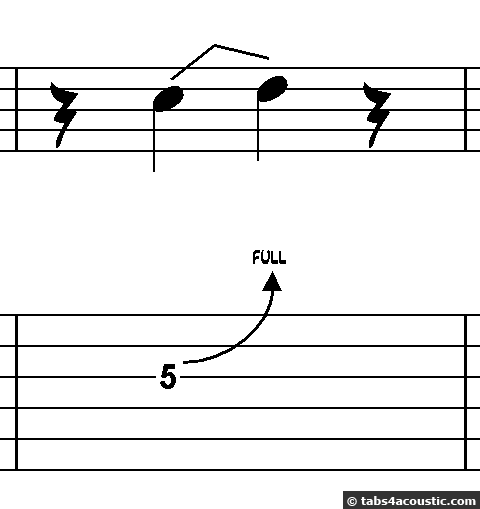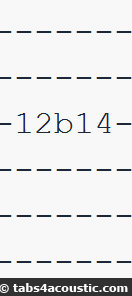Introduction to guitar effects
Basics required for this lesson : None
Practice this lesson : None
Today, we introduce the typical effects used when playing the guitar. We're not talking about the effects plugged between the guitar and the amp in order to change the sound. we are referring to the nuances in guitar playing. Effectively (ah, ah!) the guitar is among the instruments that offer the largest number and the most interesting effects, so we'd better use them!
For now, we'll just give an overview of what it is possible to do, see how to technically obtain the effect, most importantly, we'll make you hear what it sounds like. For each effect, a specific lesson will follow, in order to detail the way it is played, how to practice it, use it, etc.
In addition, we will voluntarily mention effects played with the hand that frets the notes on the fretboard only, for the time being, You will see, there's already a lot to learn!
Main effects
Vibrato
A note (other than an open string) is played and we make the string oscillate to change the pitch of the note.
tab notation:
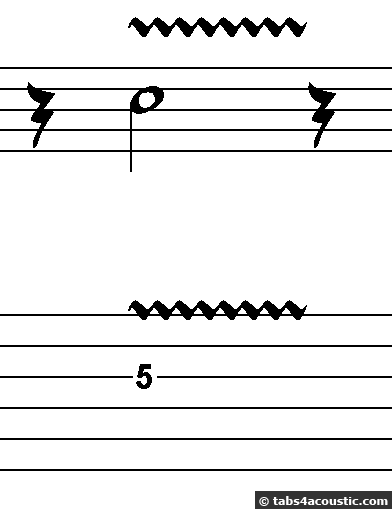
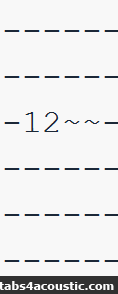
The vibrato can be very wide (varying by a semitone, for example) or soft; it can be slow or fast. The mood of the song and your personal taste determine the most suitable way of playing it. This is one of the effects that characterizes a guitarist (BB King's vibrato is immediately spot on, for example).
Bend
This effect is the most difficult one for beginners (and for the others as well) to master. It requires technique and a good ear to make it sound right.
The principle is: fret a note to begin with, then push the string up or pull it down in order to reach the sound of a higher note. The difficulty lies in being comfortable with the hand and finger position, in having the strength required to create the bend, and in having a good ear so that the note you reach sounds right.
Tab notation:
We indicate the initial fret, and the height to reach: either by tone/semi-tone, or by indicating the fret that produces the sound that we want to obtain.
We can take a note up a 1/2 tone, 1 tone, 1,5 tone or even 2 tones! We can bend the note and release it, or just play the note as we go back down (release bend), etc. .... lots of possibilities! This is THE guitar "effect" that all other instruments envy!
When played at the right moment, it can enrich a solo; but, likewise, it can ruin an improvisation, if it is not performed properly!
To study further on this, you can now view check out our tutorial "bends for beginners".
Slide
A linking effect between two notes on the same string (sometimes the first note is not really defined). This one is not too complicated: play a note and then, while still pressing down your finger on the fretboard, make your finger slide to reach a second note (higher or lower).
Tab notation:
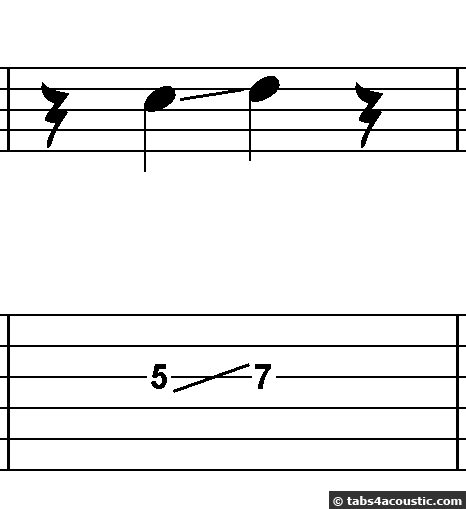
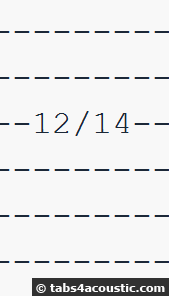
Legato
The idea is to pluck the first note only with the pick, and to make the next notes sound using only the pressure of the fingers on the fretboard. The result is a very fluid guitar playing that allows to play notes very fast. There are two movements:
The Hammer-on
Fret the lowest note and the next one, which is sharper, sounds out thanks to another finger that is tapping like a hammer.
The pull-off
This is the opposite effect: play the highest note first, and then removed the finger while gently pulling the string to make another lower note sound.
Tab notation:
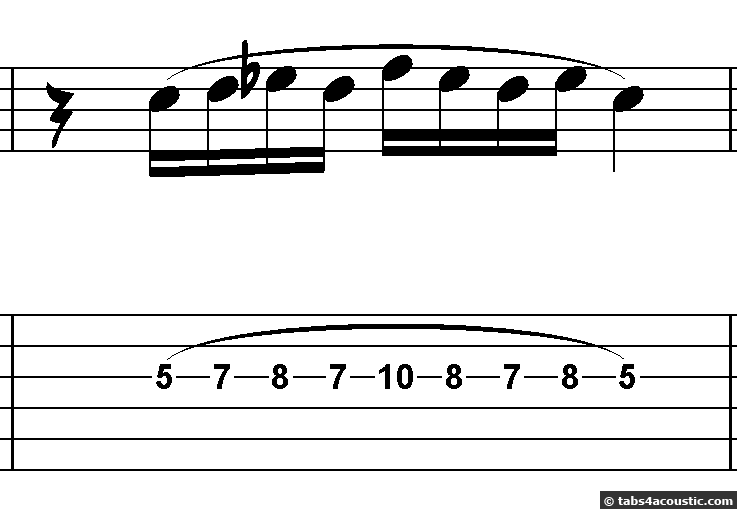
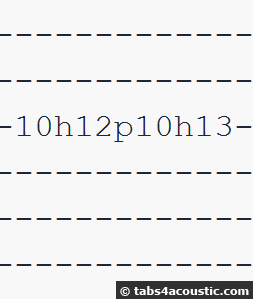
Of course, these two effects can be played one after the other very quickly (this makes it a trill).
Why? Where? How?
What is the point of all these techniques? Well, it just adds a little nuance to the guitar playing, and it helps make the melody more interesting and more personal.
The effects do not fundamentally change the melody, but it will really change the way it is perceived by the listener, as it will be much more lively and appealine. These details will make your playing unique and recognizable. They give a special touch to a melody and help "interprete" it.
The next part will detail each effect, as today was just an "appetizer" for what is to come.
To be continued...




